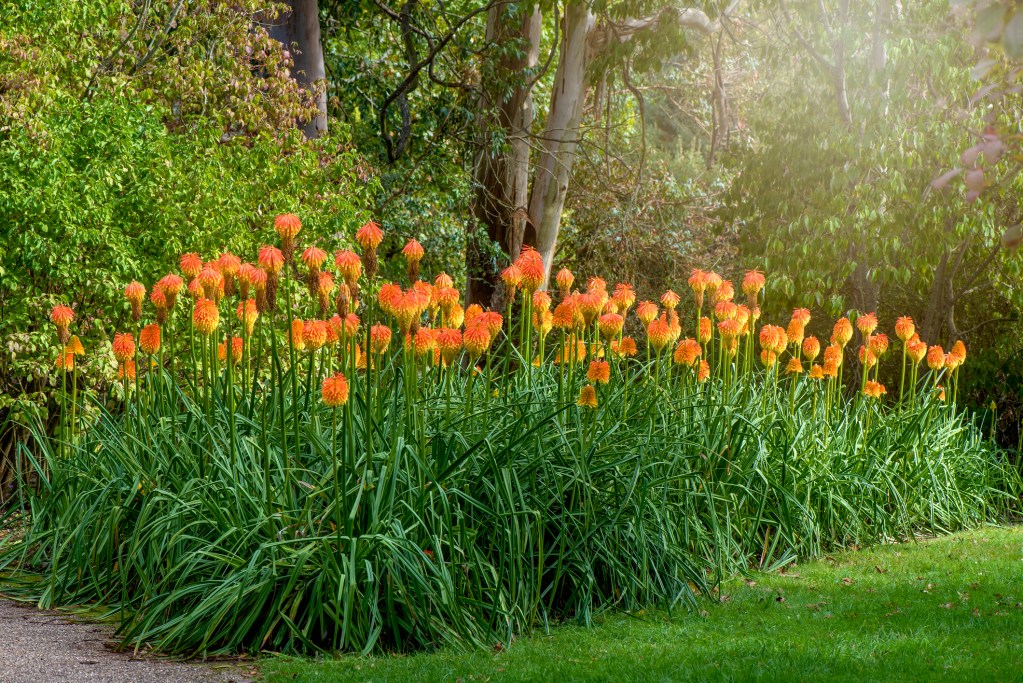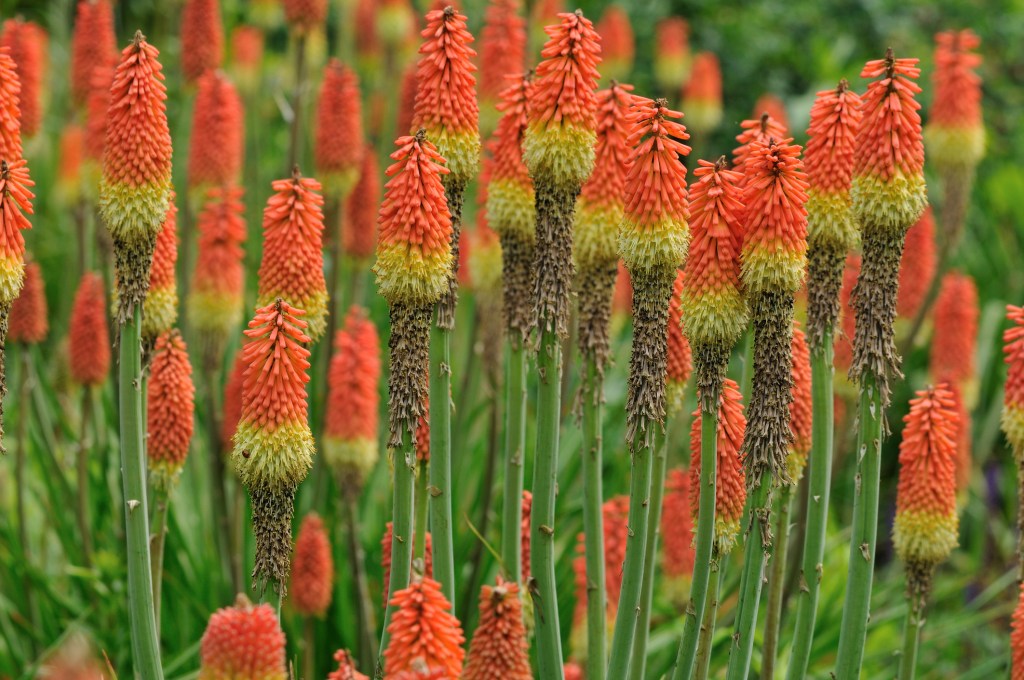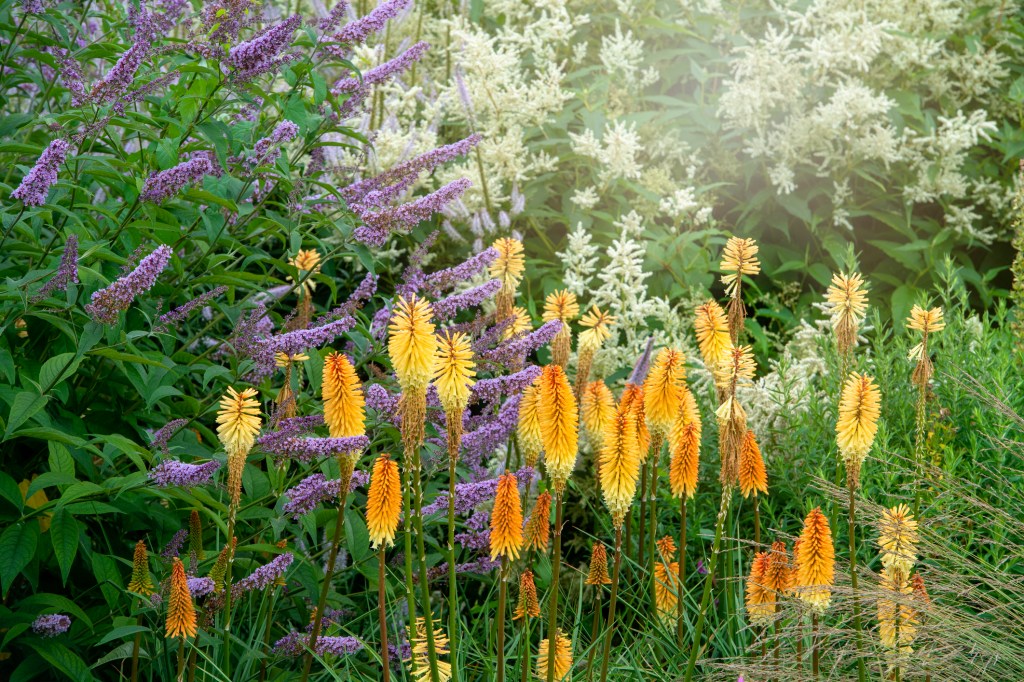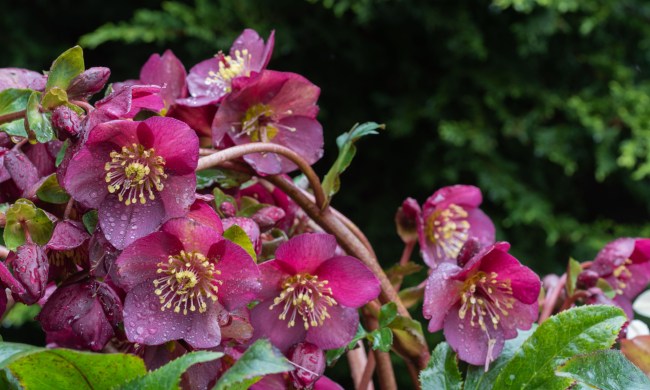Red hot pokers, also called torch lilies or kniphofia, certainly earn their name! Their height alone can be enough to catch someone’s eye, but the real show is their flowers. They bloom in brilliant shades of orange, red, and yellow, with a rounded, tapering shape. They resemble torches, fire pokers, or even phoenix feathers. They look stunning by themselves or as centerpieces in a larger flower bed. To get started growing this beautiful perennial, here's a simple red hot poker plant care guide.

Planting red hot pokers
Here's how to plant red hot pokers:
Step 1: Plant seeds and seedlings in early spring, after the last frost has passed.
Mature plants can be transplanted into the garden at any time, but they do best when planted in spring as well. However, seeds and seedlings are more common to plant, due to the size mature plants can reach.
Step 2: Plant them in well-draining soil that is rich with organic matter.
Adding compost to your soil will help with both richness and drainage.
Step 3: Space your red hot pokers a few feet apart.
Most varieties grow to be 2 to 4 feet tall and between 1 and 3 feet wide. They take up a lot of space, so be careful not to crowd them. Smaller varieties like "Little Maid" can be placed closer together, while larger ones such as "Royal Standard" will need more room.

Caring for red hot pokers
Follow these steps for proper red hot poker care:
Step 1: Water red hot pokers during hot, dry weather.
Red hot pokers are drought tolerant and require little supplemental watering. However, they don't tolerate wet feet or standing water, so don't water them if the soil is still damp.
Step 2: Feed red hot pokers with a fertilizer that's natural and contains organic matter, such as compost or leaf mulch.
If you recently planted your red hot pokers, this may not be necessary. However, if they are in poor soil or have been growing in the same area for a long time without fertilizer, then feeding your plant may improve their overall health.
Step 3: Remove dead flower stalks in winter to reduce cold damage.
You can use these flower stalks as part of a dried flower arrangement.
Step 4: Protect red hot pokers in winter by either tying the leaves up around any remaining stems or cutting them to ground level.
Tying the leaves up insulates the interior of the plant, which may be enough during mild winters. Cutting the plant to the ground can be intimidating, but red hot pokers will regrow. Cutting the leaves helps protect the plant from cold damage, especially during harsher winters.

Common problems and solutions
Red hot pokers are hardy and typically have few problems, but there are a few that can develop. You don't need to worry about pests. While snails and slugs can occasionally bother red hot pokers, they rarely cause severe damage.
Here are the most common problems red hot pokers face:
- Wind damage
- Root rot
- Smaller, fewer, or less vibrant flowers due to too much shade
Follow these steps to treat and avoid these problems:
Step 1: Provide a windbreak.
The wind can bend or even break the tall stalks of red hot pokers. This is especially likely during winter, when the stalks are dry and dormant.
Step 2: Water red hot pokers only when the soil is dry to avoid root rot.
Step 3: Remove any rotting roots.
Be sure to sanitize your scissors or shears before and after cutting the roots to avoid spreading bacteria.
Step 4: Repot or replant red hot pokers with root rot in clean, dry soil.
Step 5: Avoid planting red hot pokers in or close to the shade.
If you plant them too close to the shade, they may eventually spread into the shaded area. Accounting for the mature size when planting can eliminate this problem.

Companion planting
You can use torch lilies in many different ways. They make stunning borders or centerpieces, and they pair well with both organized gardens and more natural ones. These plants are particularly great in pollinator gardens, as hummingbirds and butterflies love red hot pokers.
For a stunning combination, pair kniphofia with other tall flowers, such as allium, spider lilies, and lupine. Adding some yarrow or Queen Anne’s lace can soften the effect, incorporating a touch of delicate white to the bright colors. Space everything appropriately to avoid crowding your red hot pokers.
Now that you know how to properly plant, care for, and work with these flowery torches, you’re ready to brighten up your yard with kniphofia. Plant them a few feet away from other plants or shaded areas and let the soil dry before watering. Most pests won’t bother torch lilies, but butterflies and hummingbirds will be glad to see them. Enjoy your bright new garden addition!




